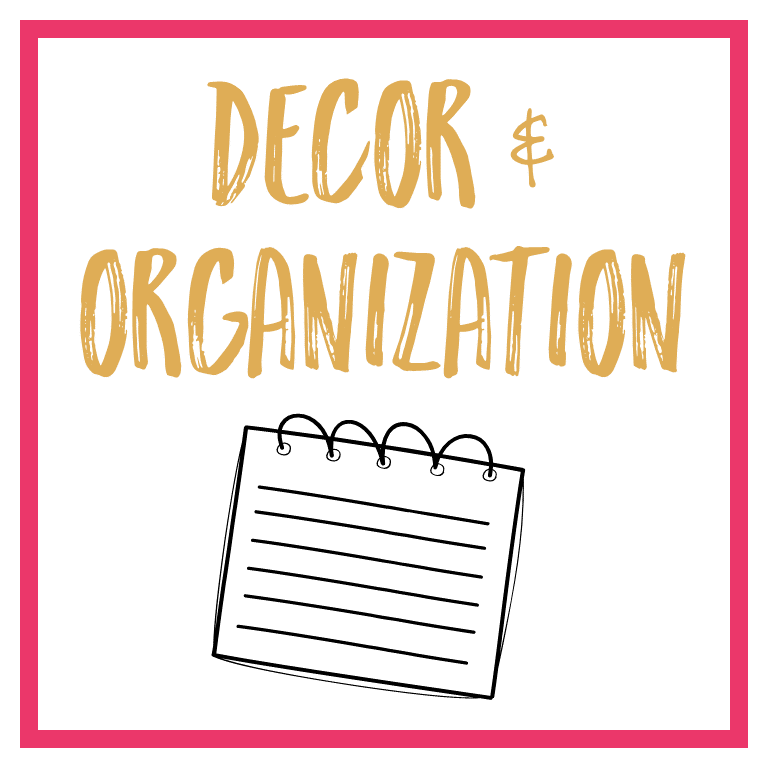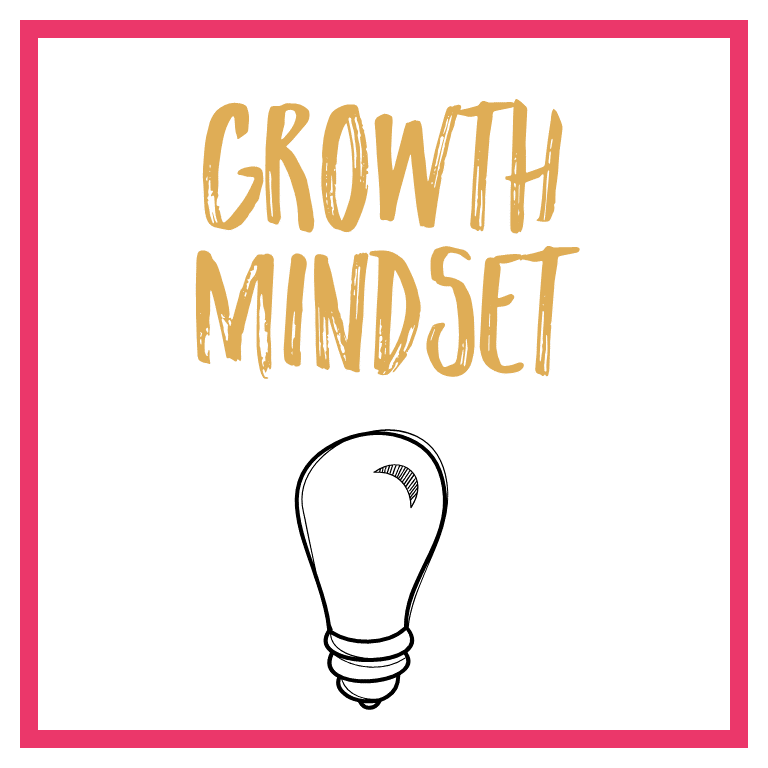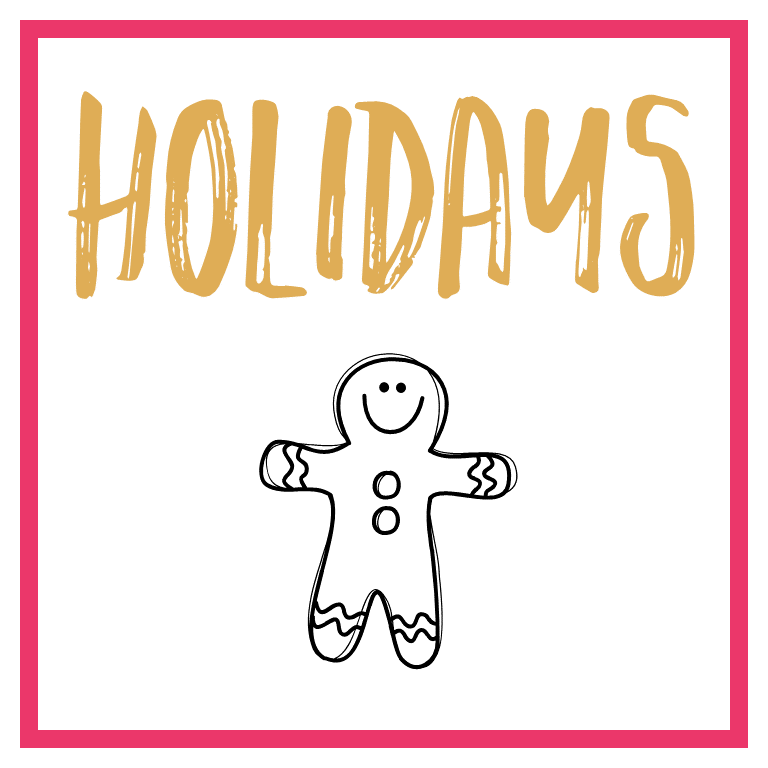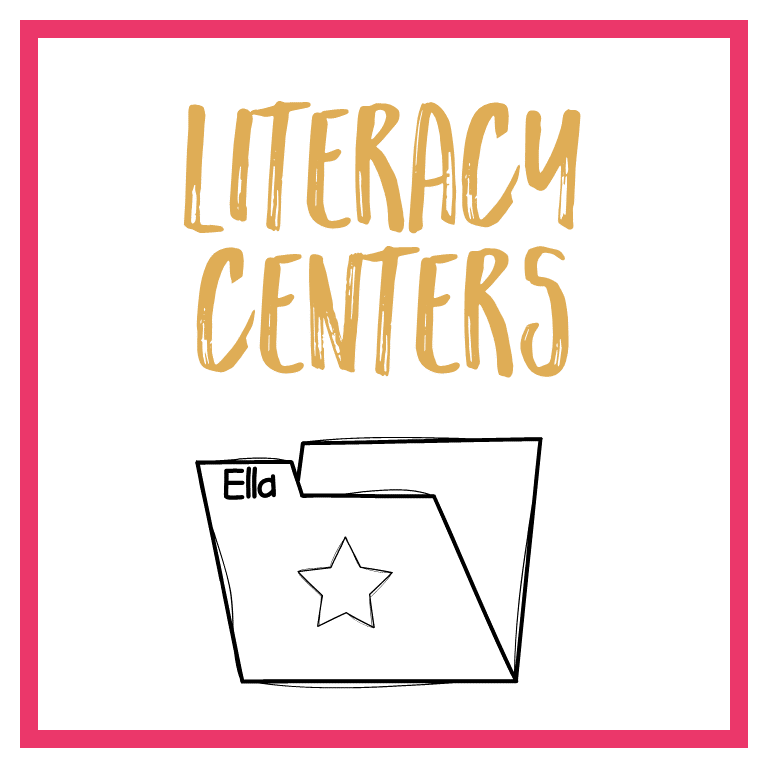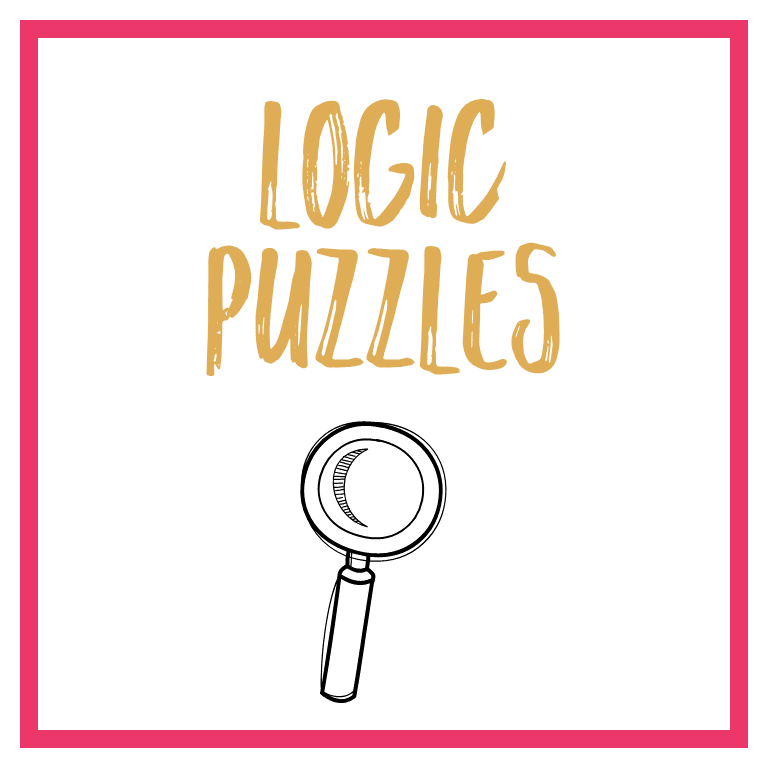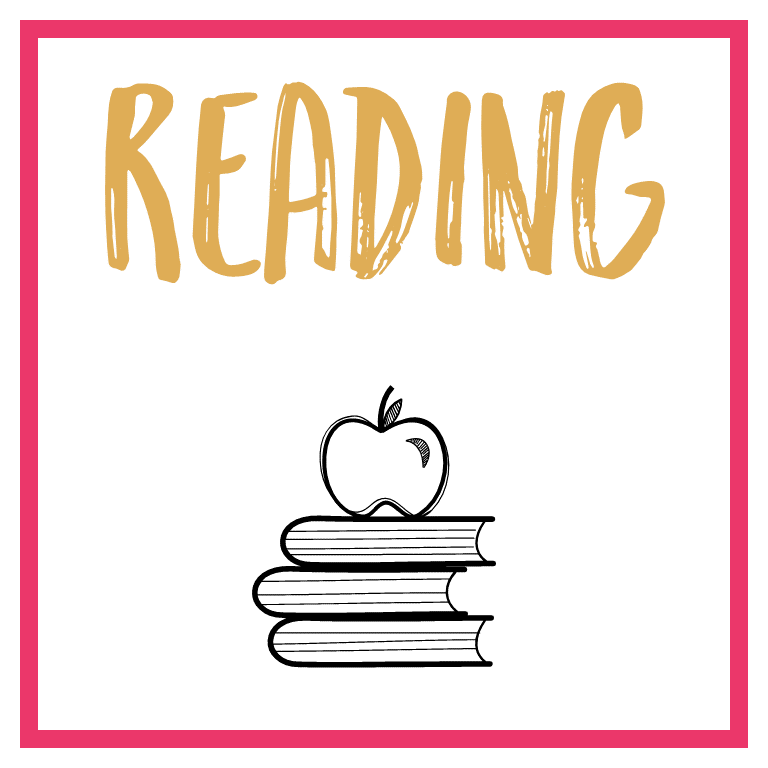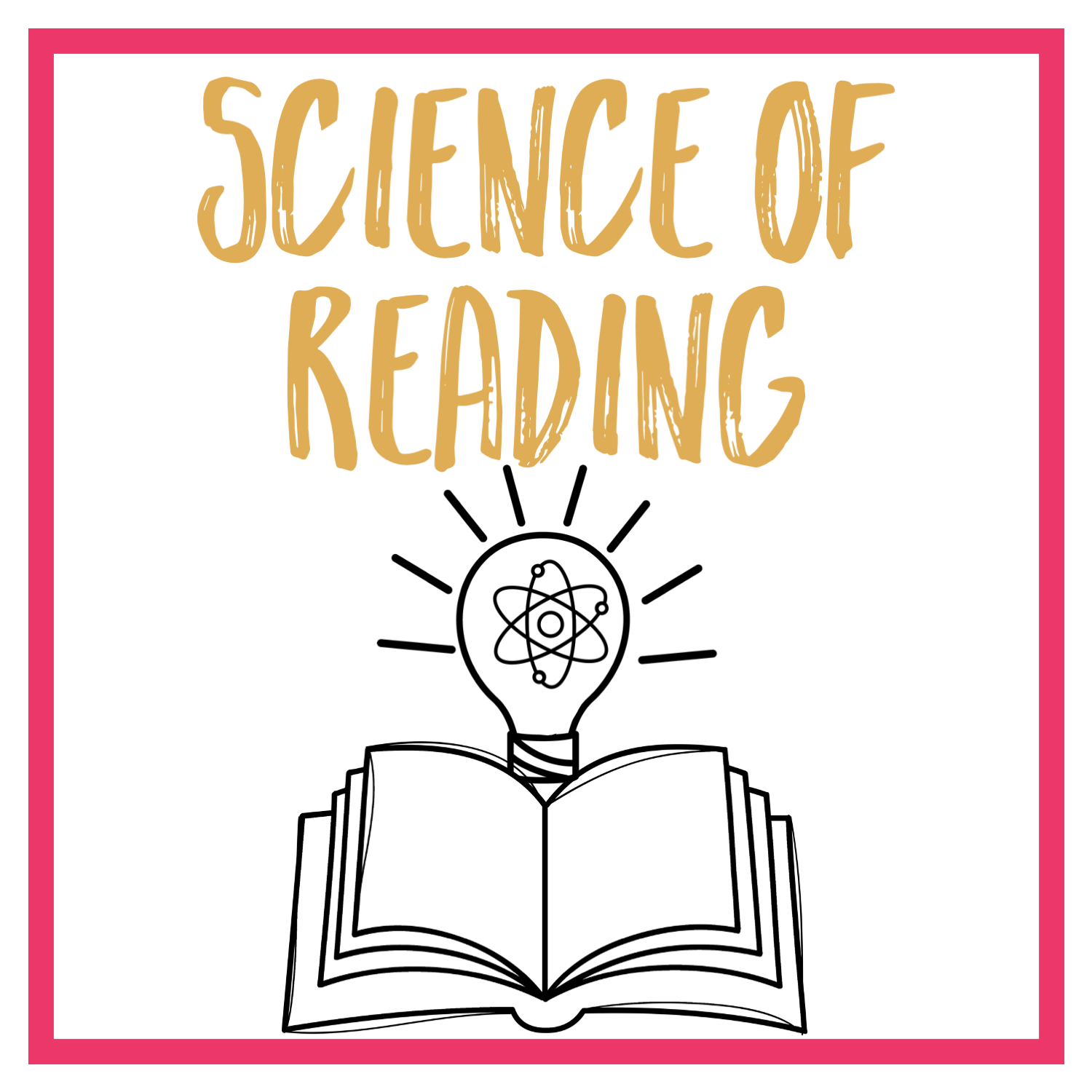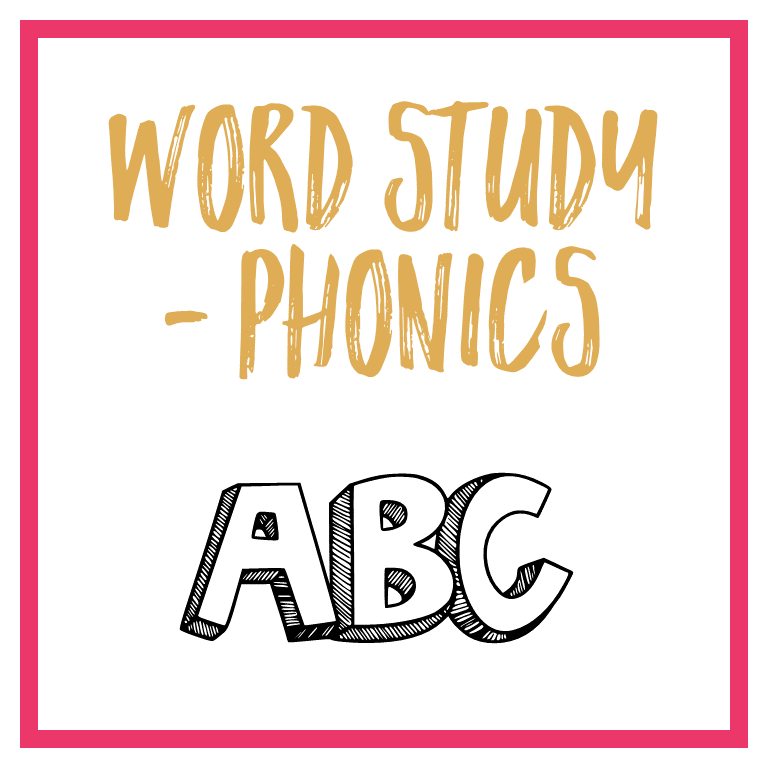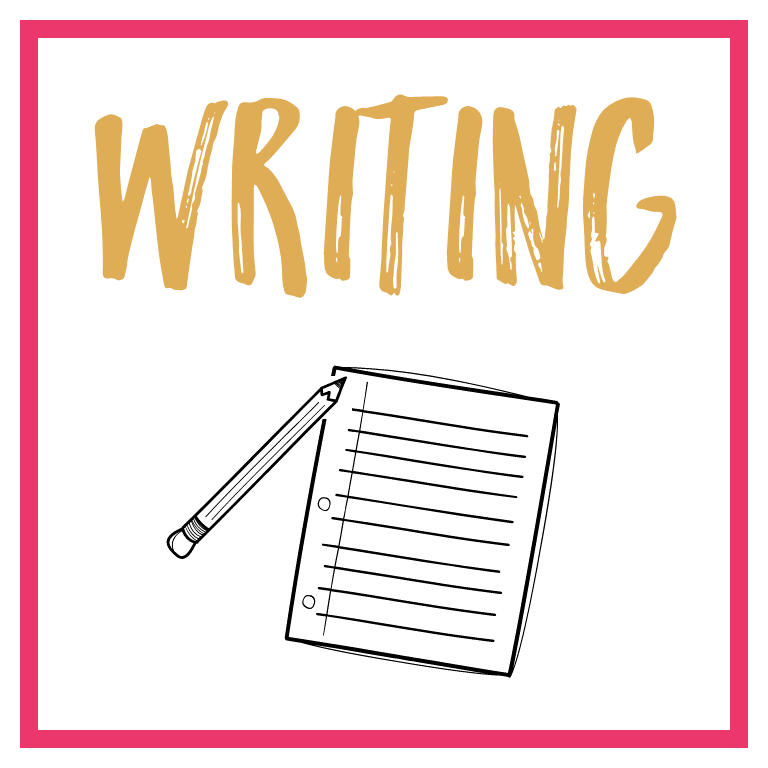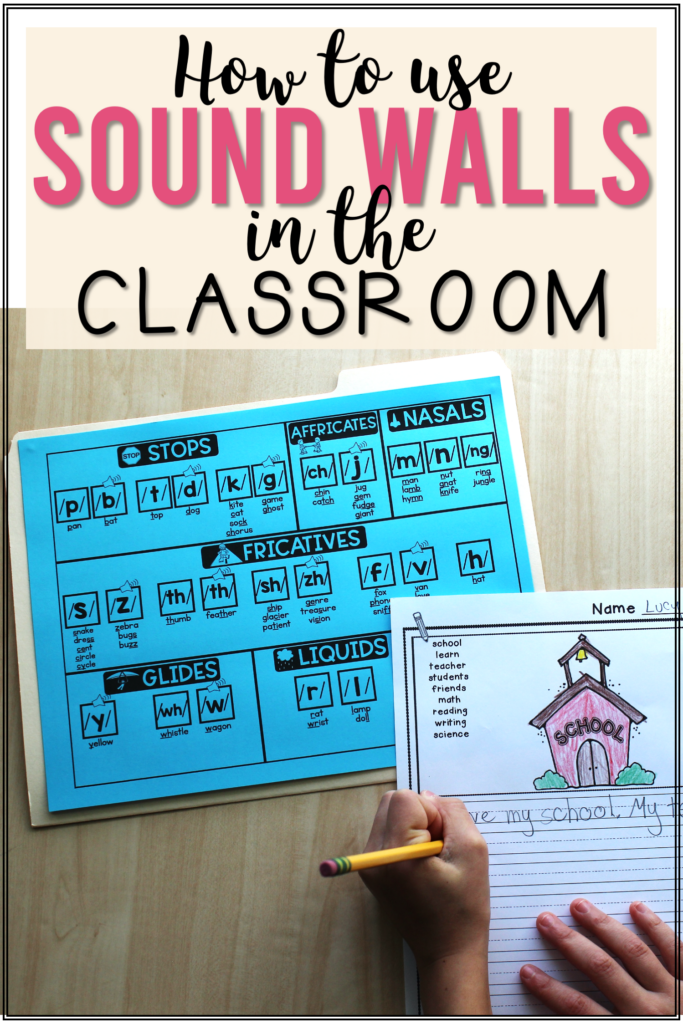
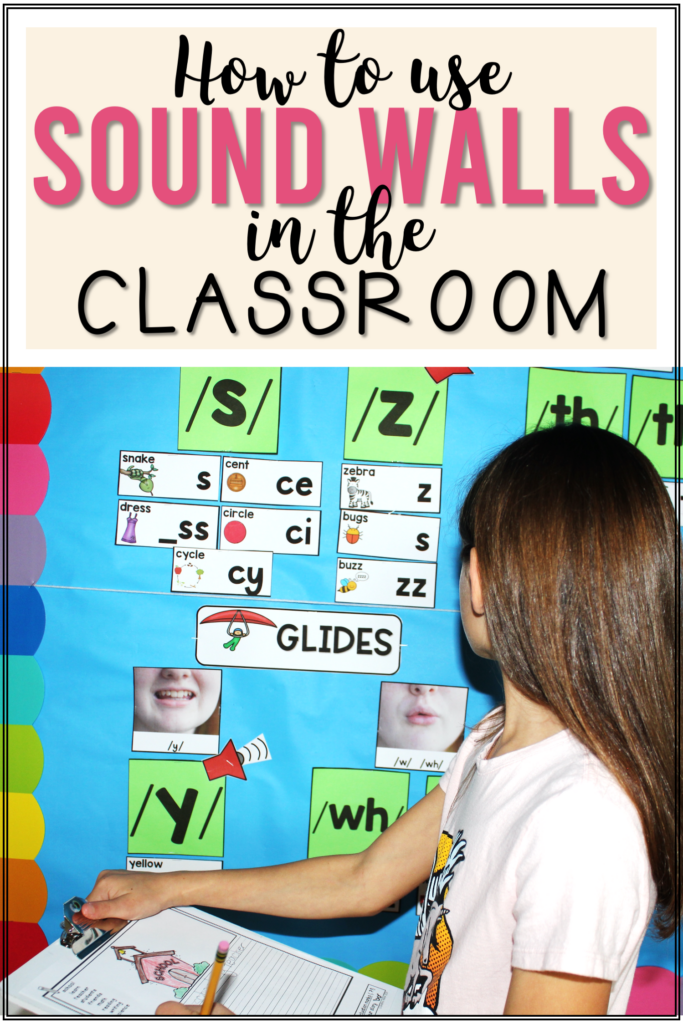
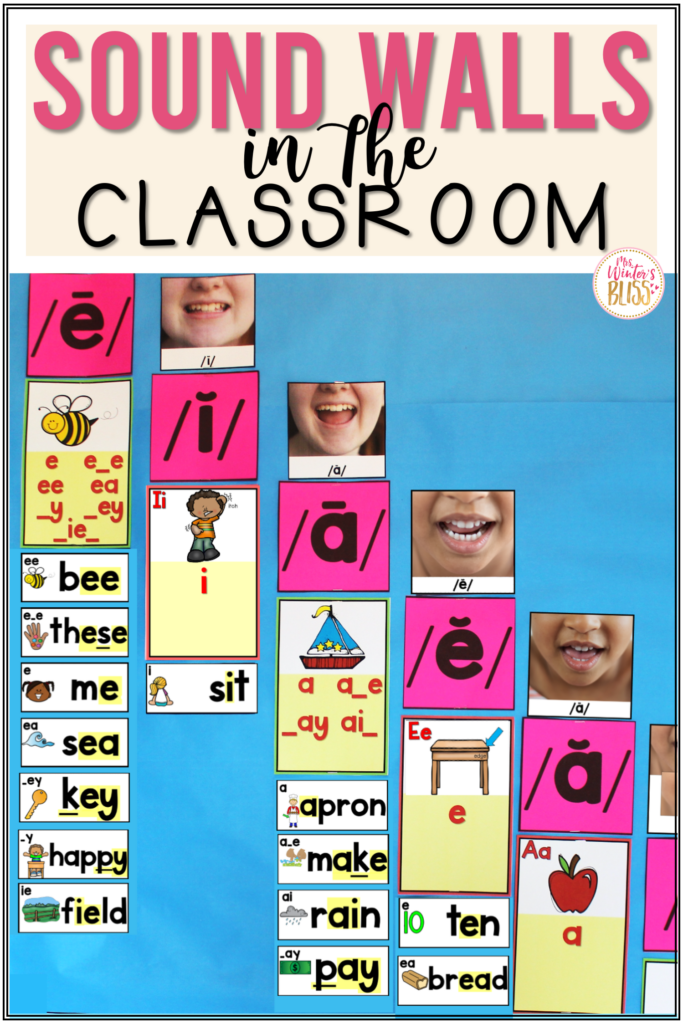
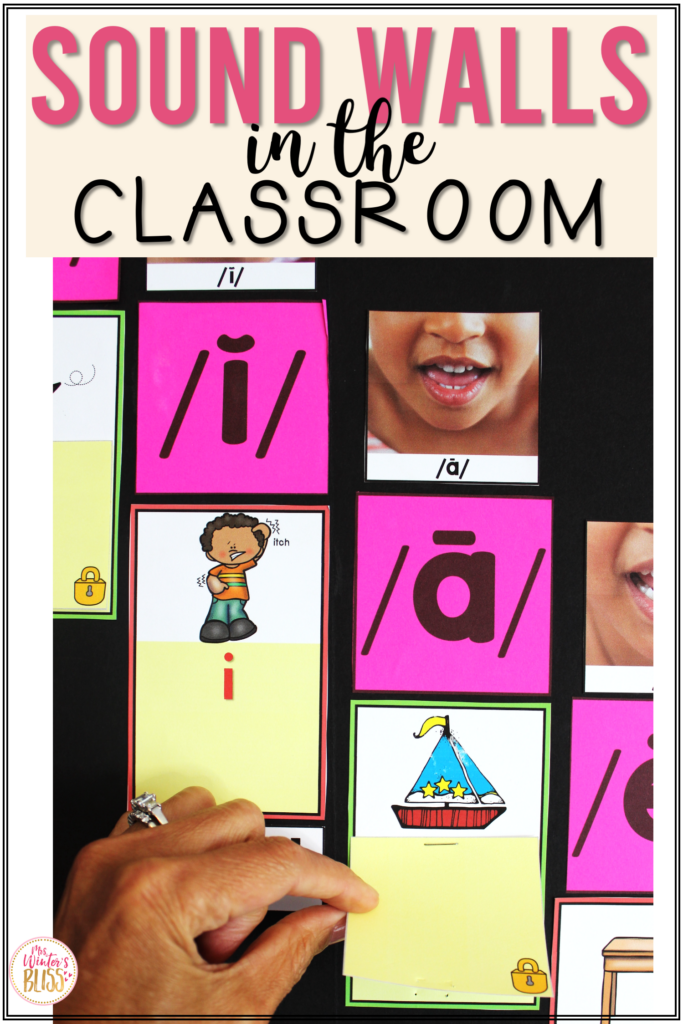
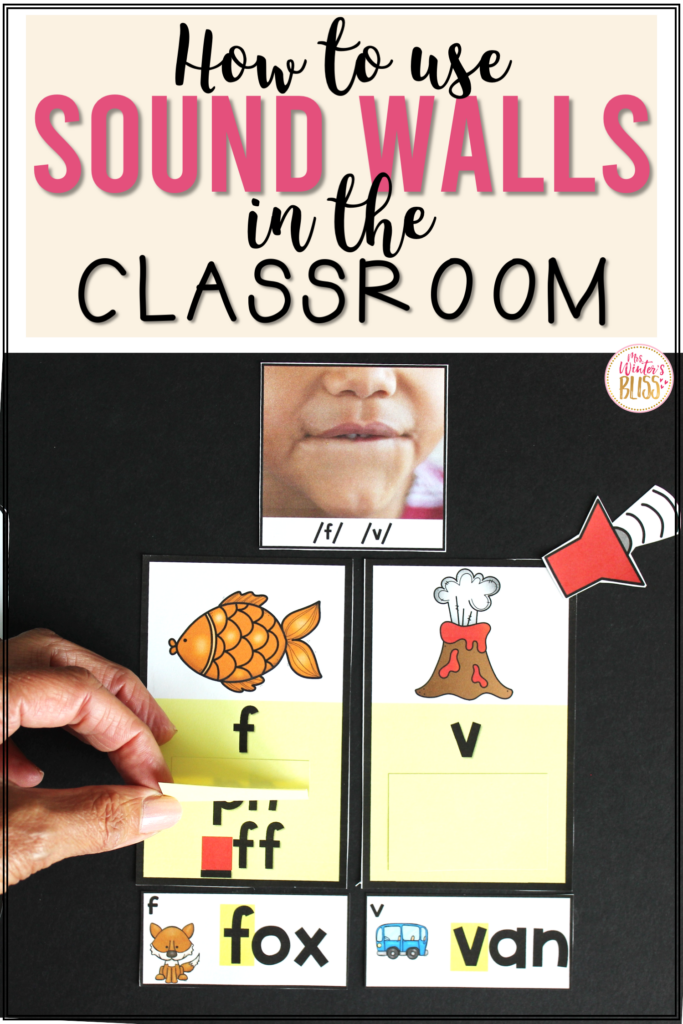
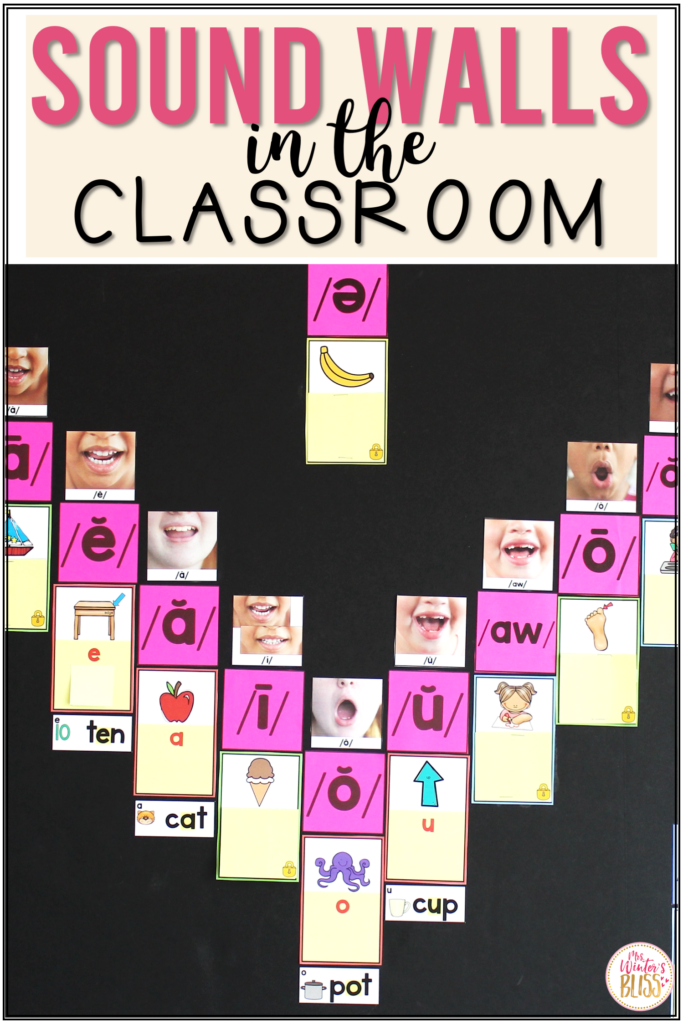
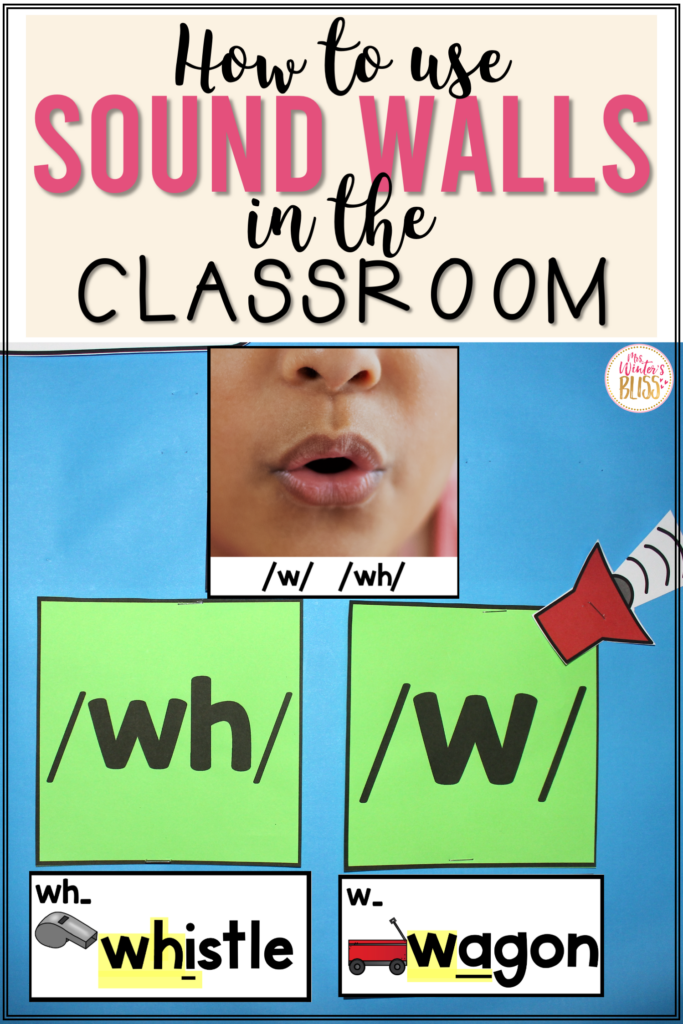
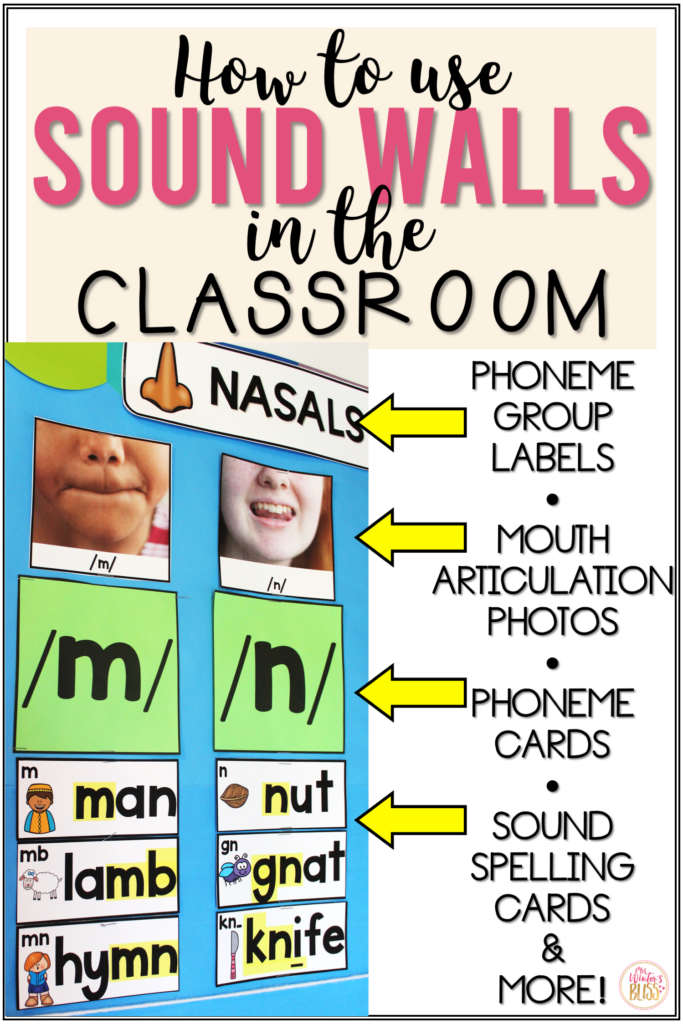

In this post, I share steps for how to begin using a science of reading-aligned sound wall in your classroom. You’ll get details about my own SoR-aligned phoneme sound wall resource with mouth articulation photos perfect for kindergarten, first and second grade classrooms. Looking for more information on sound walls and how to implement them in the classroom? Take a look at my NEW Sound Wall Course!
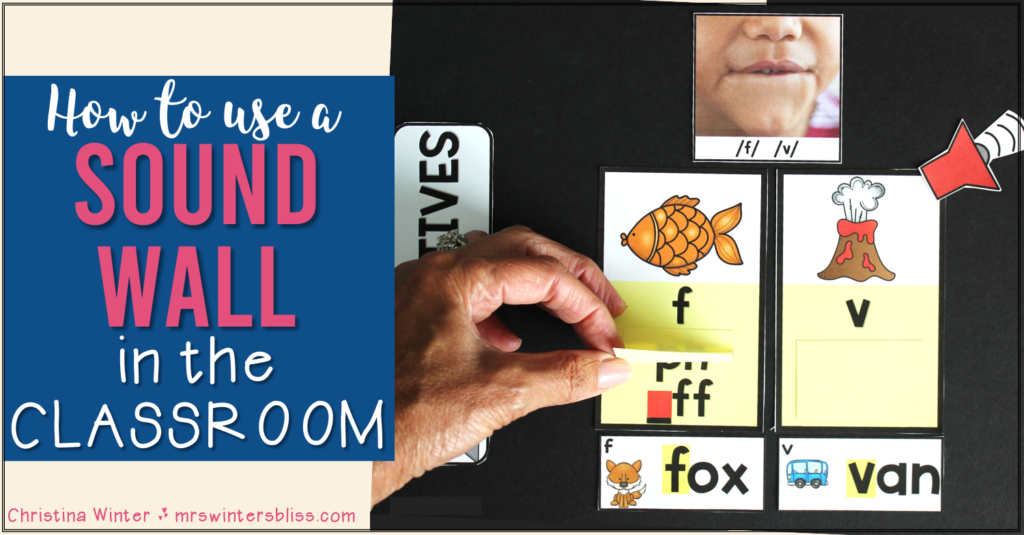
Word walls have been around for as long as most of us can remember! While I think we all have good intentions, all too often it ends up being more like wallpaper than an effective tool for teaching and learning. We now know there is a smarter way to support students in their reading and spelling. It’s called a sound wall.
In my last post, I shared general information sound walls, discussed their benefits, and how they are different from and more effective than traditional A-Z word walls. But even armed with that knowledge, making the transition from a word wall to a sound wall can feel overwhelming. The information I’m sharing today is here to help ease that stress!
Today I’m excited to share a step-by-step guide for how to introduce and use a sound wall in your classroom, as well as my Phoneme Sound Wall with Mouth Articulation Photos resource that has all materials you need to easily get a sound wall up and running in your classroom!
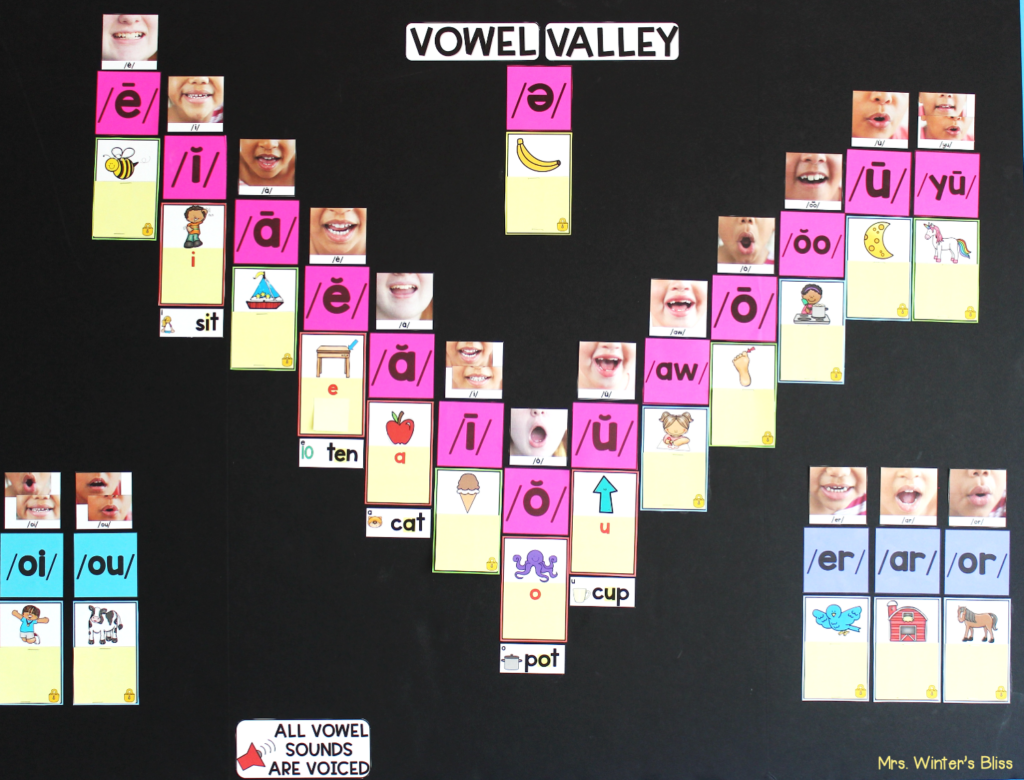
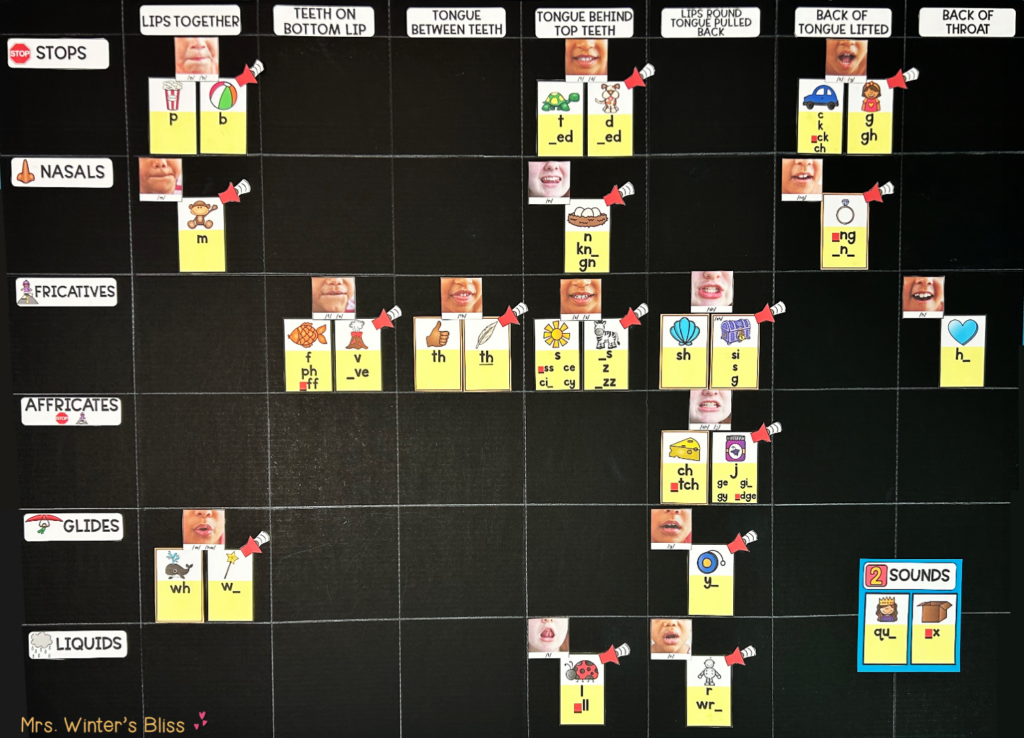
Introducing the Sound Wall
There is not one exact way you have to introduce students to a sound wall. To help you envision what it could look like in your classroom, I’ve organized some steps for how I would introduce and use a sound wall in my classroom.
1. Start Slowly!
At the start of the year, you can have the phonemes uncovered, but the graphemes on the sound wall should be covered. You’ll uncover the graphemes as you teach them.
When you introduce a new phoneme ask your students what their lips, teeth, tongue and voice are doing and how the air is flowing through their mouth. Talk about the vibration we feel when we make sounds like /l/ and teach your students that it is called voicing. Some sounds are voiced, others are not.

I recommend giving your students each a *small pocket mirror so they can see what their lips, teeth, and tongue are doing when they say the phonemes. It is particularly helpful when you’re working with vowel sounds.
This video does a great job showing the differences in the position of the teeth, tongue, and lips for each sound category. I think it is helpful for both teachers and students!
Add or uncover the graphemes and mouth pictures as they are introduced. Just be careful you don’t introduce similar sounds in sequence. It just gets too confusing for students! Here is a helpful guide for deciding on an order to teach the phonemes.
If you are curious to learn more about the phonemes, take a look at this blog post. In it, I share information about how to teach the 44 phonemes in English and offer a free phoneme-grapheme dictionary.
2. Once the phoneme is introduced, teach the most common letter or grapheme that represents the sound.
Add the graphemes and mouth articulation photos to each phoneme you introduce. For example, after introducing the phoneme /f/ you would tell your students that f is the most common spelling for that sound. You can also attach a keyword and picture to help students remember the sound.
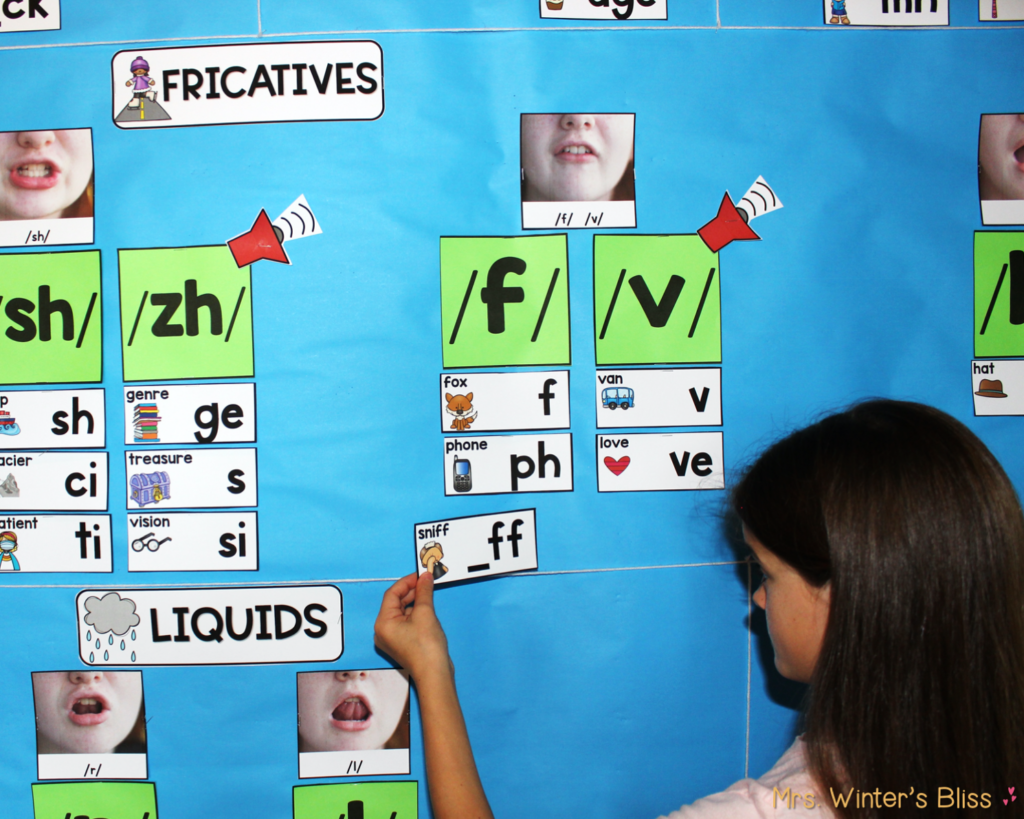

3. Review the articulation of each phoneme each day.
I’ve said it before but it’s definitely worth repeating… The mastery of phonics requires students to have plenty of opportunities for review and repetition. All too often we underestimate the amount of time it takes for our students to master phonics skills. It just takes a few minutes to go through the sounds that have been taught on the sound wall, but it is really so valuable for your students.
4. Explicitly teach students how to use the sound wall.
Finally, you’re going to have to spend time teaching and modeling how to use the sound wall to help spell and decode words. I like the idea of providing students with their own mini, portable sound wall that they can tape to their desk or notebook for a quick and easy reference. It also provides great differentiated support!
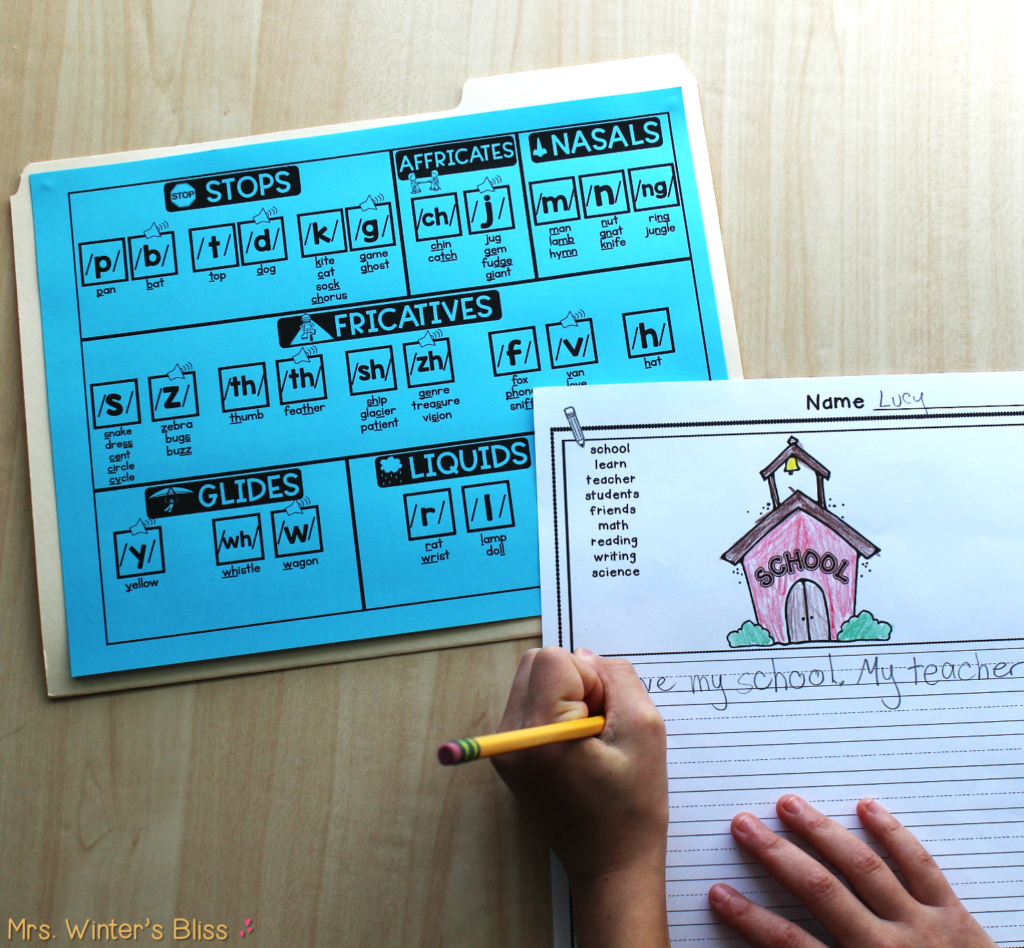
Phoneme Sound Wall Resource
Hopefully, you’re now able to envision how a sound wall could work in your classroom – that’s great! But oh the thought of all the materials that must be created! It’s a lot! I get it! So to help you out I have created my Phoneme Sound Wall with Mouth Articulation Photos resource! It has absolutely everything you need to create a sound wall from start to finish!
To get your sound wall started you’ll get phoneme cards and phoneme group labels to organize the sounds on the wall.
The mouth articulation photos are a wonderful support as you focus on what lips, teeth, and tongue are doing when you produce a sound.
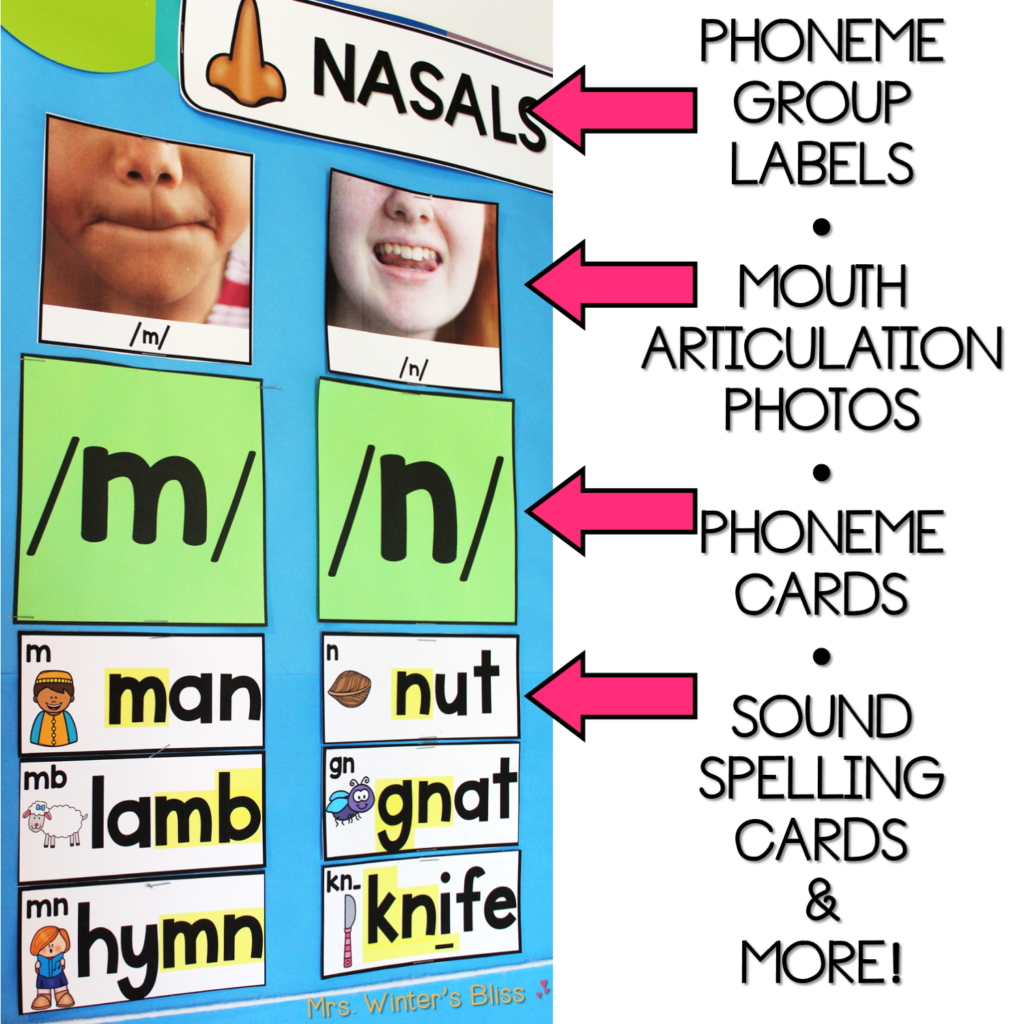
You’ll also get sound spelling cards (both large and small) and sound spelling picture cards to post below each phoneme.
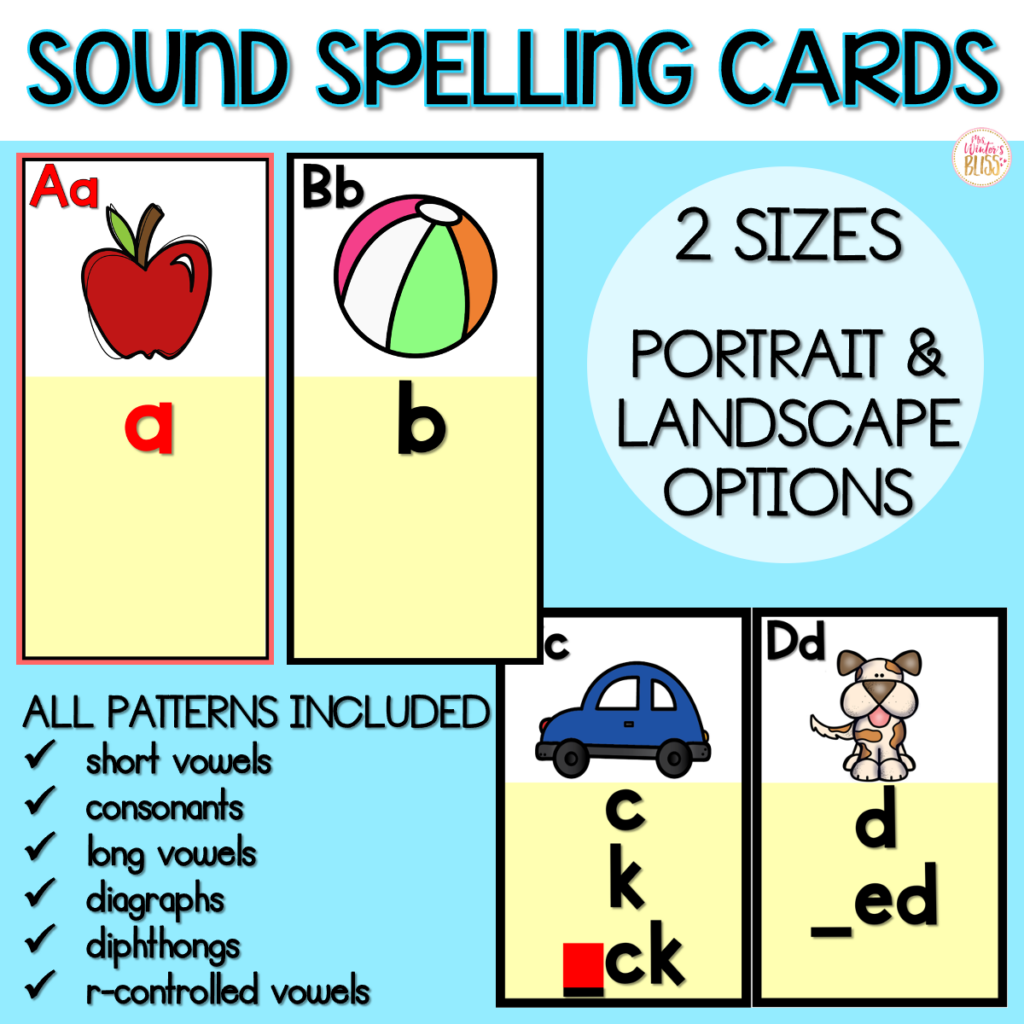
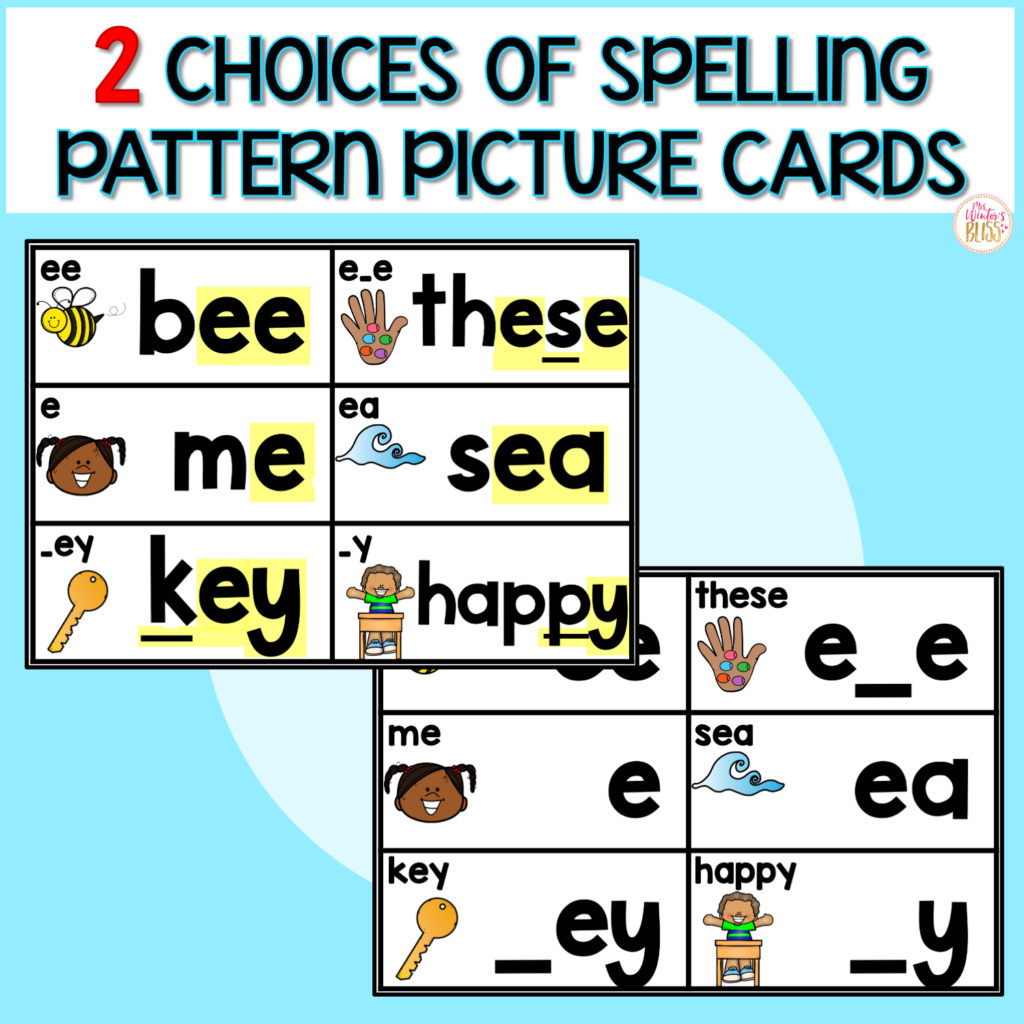
The resource also includes materials for your students! These materials allow you to differentiate and provide the support students need to be independent readers and writers!
The student materials include:
- Vowel Valley Chart (2 versions)
- Consonant Chart (2 versions)
- A-Z Sound Spelling Chart for student folders
- Alphabet Chart (color and b/w)
- My ABC Dictionary
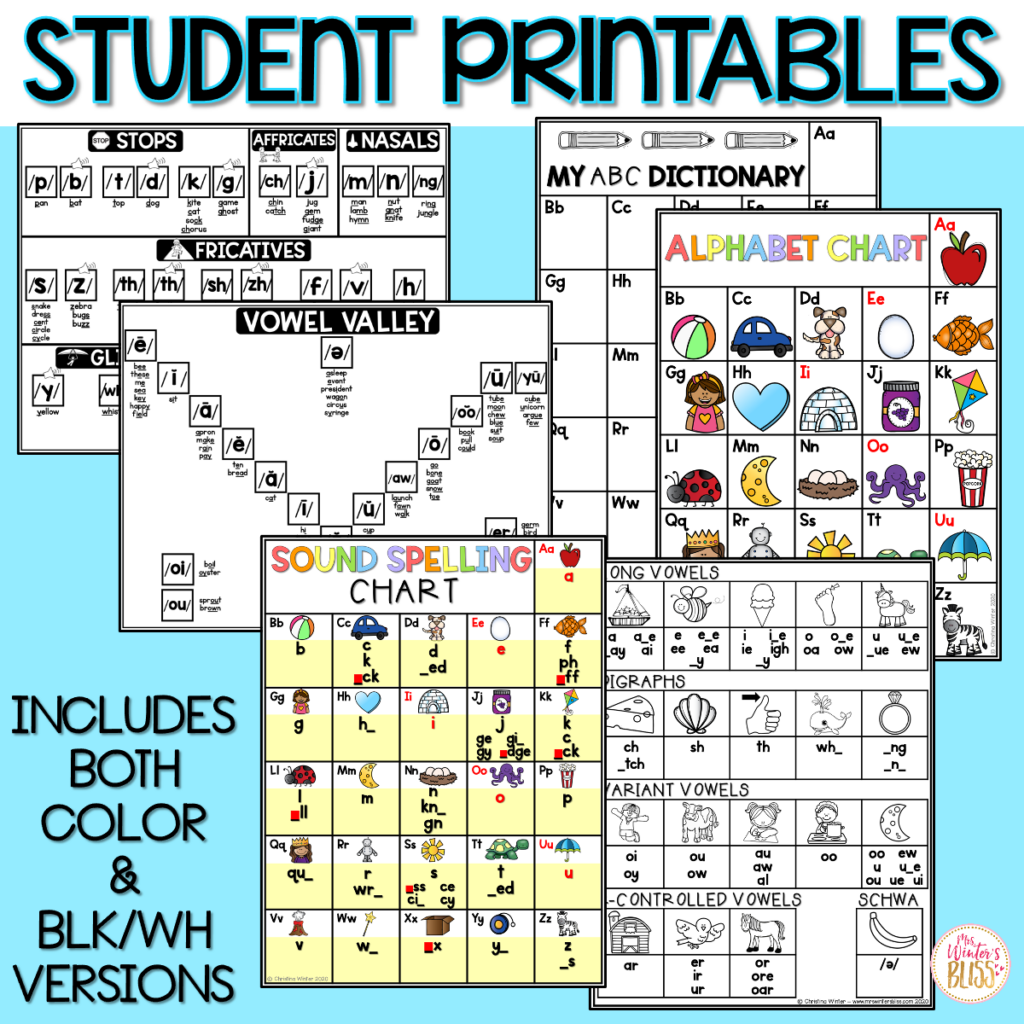
I love this resource because it has everything (and more!) you need to get a sound wall up and running in your classroom. The only thing for you to do is print the materials, cut and laminate if you wish!
Taking on an instructional shift (like adding a sound wall to your classroom!) isn’t always easy. It is SO helpful to have all the materials set and ready to go. Rather than spending hours creating the materials yourself, you can focus your time on planning and providing smarter phonics instruction to your students. And isn’t that the way it should be??
Using a sound wall can transform your phonics and writing instruction and help your students grow as readers and writers. I hope the information I’ve shared today has helped you better understand the value of a sound wall and motivated you to try one in your own classroom!
Are you looking for more help with your classroom sound wall?
I’ve got just the thing for you!
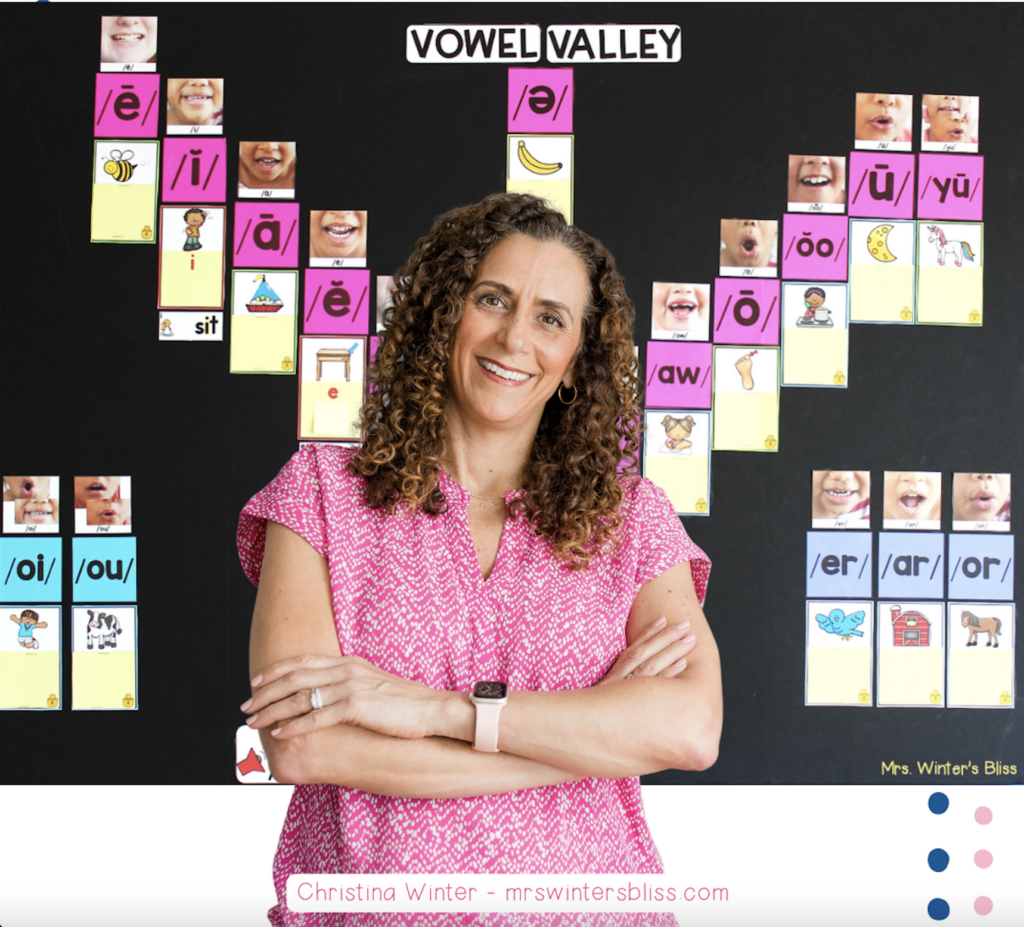
My new course, The Science of Sound Walls, will take all the guesswork out of using your sound wall. This virtual course is your complete training and implementation plan for using a sound wall in your kindergarten, 1st and 2nd-grade classroom.
DIscover what is inside The Science of Sound Walls here.
-
Sale Product on sale
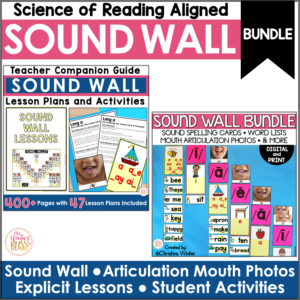 Sound Wall with Mouth Photos Lessons & Activities Bundle – Aligned to Science of ReadingEarn 0 Reward Points
Sound Wall with Mouth Photos Lessons & Activities Bundle – Aligned to Science of ReadingEarn 0 Reward Points$71.50Original price was: $71.50.$57.20Current price is: $57.20.Rated 5.00 out of 5 based on 2 customer ratings -
Sale Product on sale
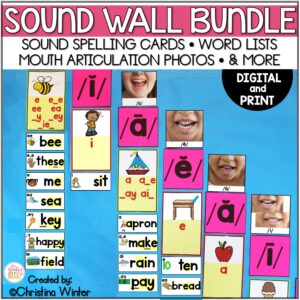 Phoneme Sound Wall with Mouth Articulation Photos – science of reading alignedEarn 0 Reward Points
Phoneme Sound Wall with Mouth Articulation Photos – science of reading alignedEarn 0 Reward Points$31.50Original price was: $31.50.$28.00Current price is: $28.00.Rated 5.00 out of 5 based on 21 customer ratings
*This post contains an affiliate link. This means that, at no cost to you, I earn a small commission should you choose to make a purchase through the link.

